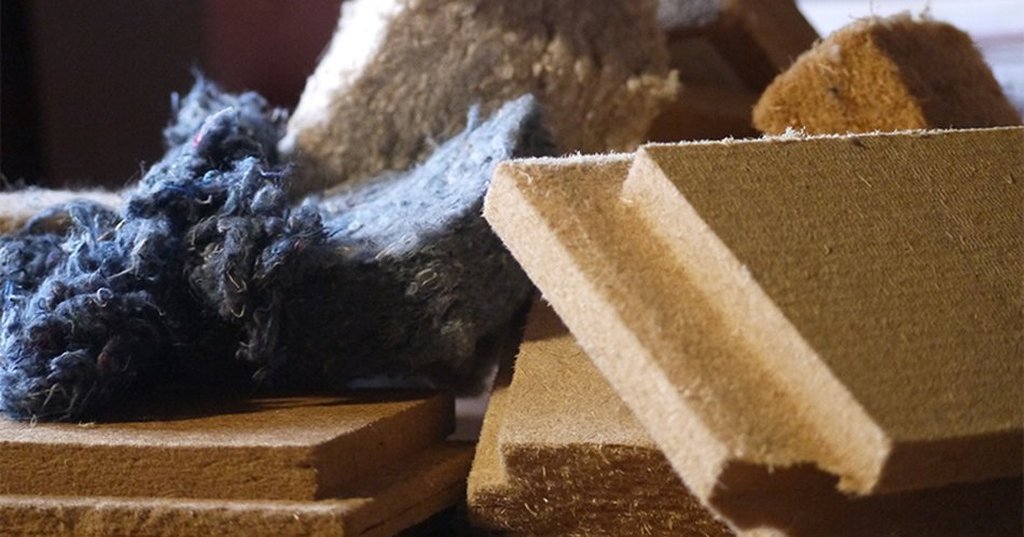
Virginie Gautier
Generalising the use of biosourced materials in the building industry
Karibati is a design office with expertise in biosourced materials and a cooperative and participatory society approved by the State as a Social Utility Company. Founded in 2015, the young company seems determined to change the uses in the building sector. Its objective is clear: reduce the environmental impact of this sector through the development of bio-sourced materials.
To achieve its mission, Karibati supports companies wishing to develop while using bio-sourced materials. This is a strong general interest mission turned to local authorities, companies as well as project owners. This philosophy begins within the very organisation of the company, which has an innovative governance system with (for example) a rotating management.
Thank you Virginie for answering Les Grandes Idées’ questions!

Bio-sourced materials
Hello Virginie,
What are the challenges to be taken up to increase or initiate the use of bio-sourced materials in local authorities, companies and project owners practices?
Hello Les Grandes Idées!
Bio-sourced building materials have moved beyond the “niche market”, but there are still many challenges to met in order to massify their use.
On the supply side, this involves manufacturers to register their products within the construction normative framework. Although the widely used biobased materials are today considered “standard techniques” by insurers (i.e. covered by standard technical document (a DTU in France), professional rules or technical opinions validated by the Product Prevention Commission, which brings together insurers in particular), many still have to go through these technical assessment stages to be massively integrated into buildings. However, these are long and costly steps, therefore less accessible to small and medium-sized enterprises, which nevertheless constitute a large proportion of manufacturers of bio-sourced products.
On the demand side, the process of awareness-raising, acculturation and training for all those involved in the sector just begun. Although construction methods that are now almost uniformly used have only been so for a short time (concrete constructions have only been widely developed in France since the 20th century, and glass wool was created in 1938), there is a real addiction of professionals for these materials in the sector. This can be explained by the fact that important industrial clusters have imposed themselves on the building sector over decades. It is therefore a question of advising craftsmen, project managers and project owners, as well as future professionals (who are today students and apprentices), to help them move towards other types of materials such as bio-sourced materials, which are more in line with major ecological and social issues nowadays.
Public authorities also have a key role to play in supporting the bio-based products development, whether through the establishment of ambitious environmental rules or the creation of financial incentives to encourage the use of more sober materials for building contractors, for example.
In your opinion, how can regulations and labels help to acculturate a whole sector towards a more responsible and aware process?
The experimentation E+C- certification, that heralds the next building environmental regulation RE2020, has certainly allows many professionals to better understand all the environmental impacts due to building construction – but in the detail, it remains complex for most of us. Regarding numerous environmental labels and certifications, a lot of them are not simple to apprehend and one might easily get lost.
I think we must therefore ensure that we offer simple and easy-to-handle tools – the “Bio-sourced Building” label is a good example. These tools must also combine with an educational support by providing online information content, short training and dedicated coaching.
An overall sustainable approach must also take into account social indicators such as the part of local workforce, craftsmen and construction workers working conditions… For now, there are still few references frameworks on the subject.
How to ensure the link between local distribution channels and bio-sourced materials?
From my point of view, it is more relevant to ensure that building materials come from as local as possible sources, either in relation to the origin of the material they are made of, or to their proximity with the manufacturing site. The less a product is processed, the easier its “local” performance is measurable. In the case of bio-sourced products, we must start to favour materials with a very high bio-sourced composition: the “Bio-sourced Product”, which reflects this indicator, makes it easier.

The products are recognisable by the logo of the label (above).
Within your activity you are developing KaribatiLab, how does it work and what are its objectives?
In addition to the research and consulting missions we carry out for our clients, we set up development projects we carry out alone or with partners. Depending on the project, we deal with various topics: carbon storage, environmental assessment, bio-based materials, impact of bio-based materials end-of-life, comfort inside buildings, etc. Our aim is to move the sector forward by working on what we consider essential for its development. Some projects lead to studies, others to products such as aKacia, the FDES generator dedicated to bio-sourced insulation and concrete (release planned for the late 2020).

The Teahouse signed by the agency A1 Architects using bio-sourced materials for the interior design. [©Ester Havlová]
You are a cooperative and participatory and a social utility company, can you explain what does it mean externally and internally? Can you explain what is innovative in your governance and how does it work?
The big difference between a cooperative and participatory company and a traditional company is that each employee is a partner (or is made a partner within the two years he/she joined the company). Employees hold at least 51% of the share capital and 65% of the voting rights. In our case, the employees hold almost all the share capital, so we are all really involved in the management of the company.
We decided to bring the concept a step further by introducing rotating governance (direction changes every two years), and by applying the same salary for all partners. On a day-to-day basis, everyone is very autonomous in work, the organisation is completely horizontal, and important decisions are taken in a collegial manner.
What would be your dreamed city, what construction methods do you imagine for tomorrow?
My dreamed city would be a city where we would favour refurbishment rather than construction of new buildings, and massive use of local building materials: bio-sourced, geo-sourced and reused. And since all dreams are allowed, a city where public transport and soft transport will have gradually replaced cars, a city with zero waste (an experiment has already taken place on rue de Paradis in the 10th district of Paris), and finally a city where (local) vegetation is everywhere!
Thank you Virginie for your answers!
